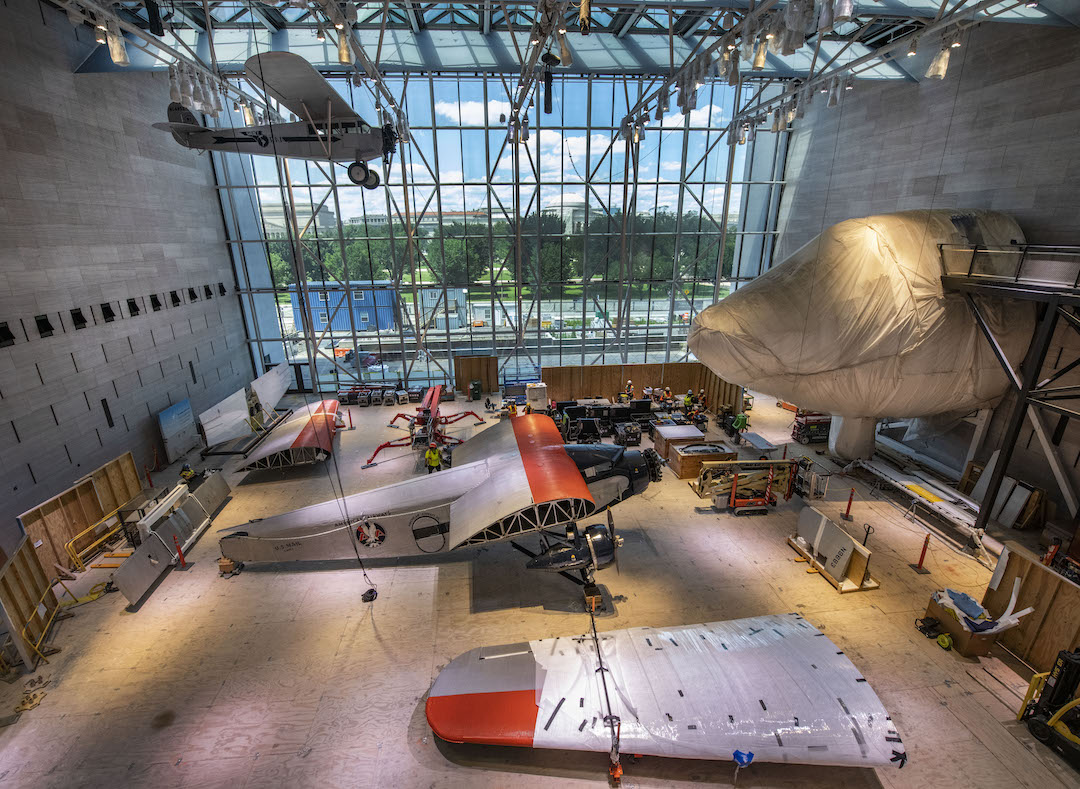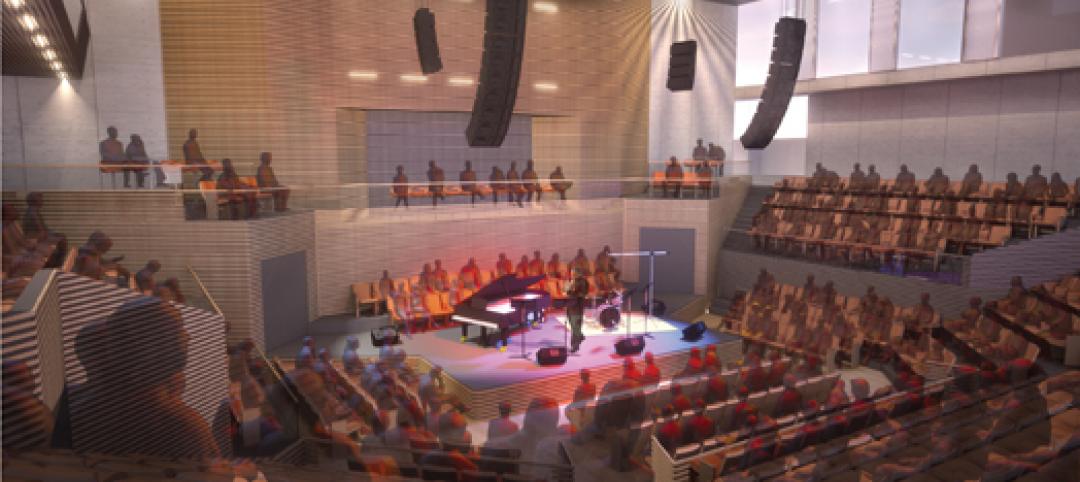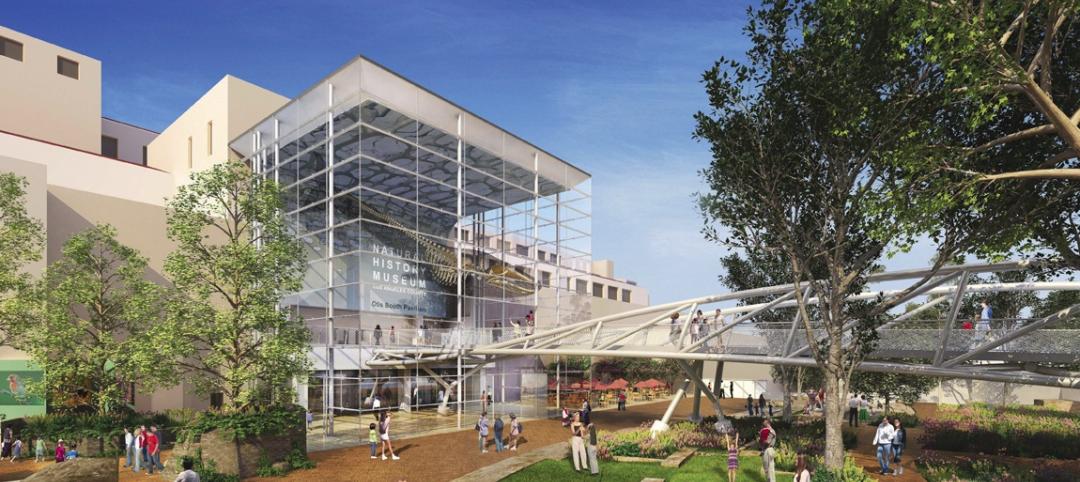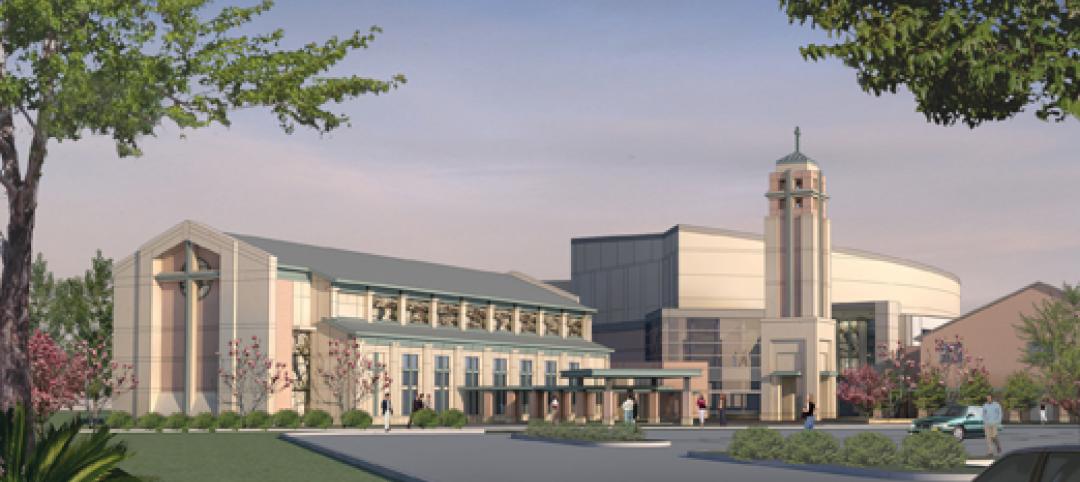One of Clark Construction Group’s cultural projects is the Orange County (Calif.) Museum of Art’s new three-story, 53,000-sf home for the Segerstrom Center for the Arts in Costa Mesa. Throughout the construction process for this $73 million project, Clark has facilitated tours for stakeholders and potential donors that recently included a breakfast on the jobsite.
Efforts like this to raise capital for cultural buildings became necessary during the COVID-19 health crisis. “For some cultural institutions, the pandemic has created a more challenging fundraising environment,” says Jared Oldroyd, Senior Vice President at Clark, who has been the executive in charge of several of the firm’s cultural contracts.
Oldroyd, like other AEC sources contacted for this article, have seen their cultural projects bounce back to life over the past 12 months. But the pandemic’s impact is likely to be longer-lasting when it comes to new construction and upgrading existing buildings to meet new air-quality and social-distancing norms.
For example, LeChase Construction is doing more with imaging technologies to communicate remotely with stakeholders, says its Vice President Lee Sommerman. That includes virtual real-time tours, increased use of drone imagery, and systems that upload images captured as a project team member walks the site.
As part of the OMA-led expansion of the New Museum in New York City, the architecture firm Cooper Robertson did extensive research into indoor air quality and visitor-staff circulation to ultimately determine that the building’s existing HVAC system met or exceeded guidelines set by the Centers for Disease Control and Prevention, says Erin Flynn, RA, LEED AP, Partner and Director of Architecture.
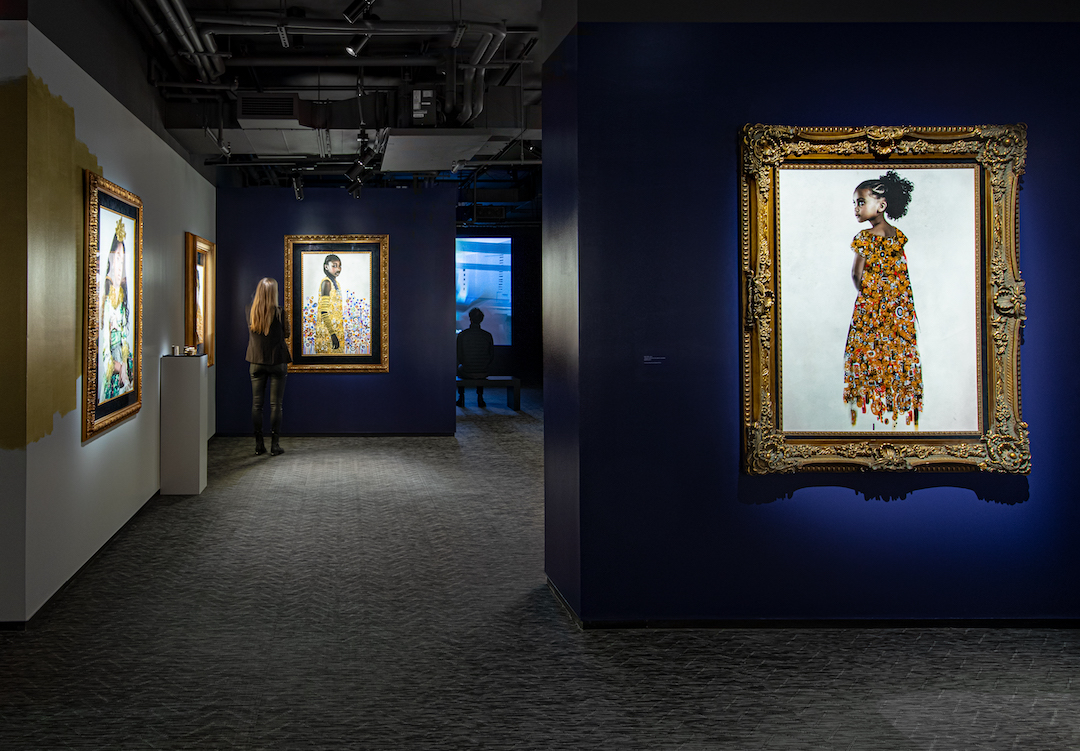
Flynn adds that another COVID-19 protocol now finds more cultural centers like museums enabling patrons to access information via their own mobile devices. Clark’s Oldroyd also sees a push by cultural centers toward interactive and immersive displays that incorporate more touchless elements, right down to the stylus that each visitor receives from the National Museum of the U.S. Army in Fort Belvoir, Va., one of the new constructions Clark completed in 2020.
Oldroyd points out that 75 percent of the overall exhibit area in the Museum of the Bible in Washington, D.C., features interactive and immersive experiences. To support such projects, his firm has been able to leverage the in-house expertise of its S2N Technology Group.
Fotografiska New York, a photography museum that’s an adaptive reuse of the 1894 Churches Mission House, creates a space for visitors to meet, eat, drink, and experience photography through an immersive series of rotating exhibits. Natural light was intentionally excluded from the gallery floors through the addition of interior walls, so that ambient light can provide a sense of intimacy with the artwork, explains Theresa M. Genovese, AIA, LEED AP, a Principal with CetraRuddy Architecture, which provided architecture and interior design services for this six-story, 45,000-sf project.
Genovese observes that, even before the COVID-19 outbreak and spread, some cultural institutions were investigating the so-called “distributed museum model,” which refers to pop-up or temporary exhibits or events that expand the reach of the facility and bring cultural programming to other physical or virtual spaces.
In that same vein, in markets where climate allows, some cultural institutions are blurring the boundaries between indoor and outdoor spaces. “Opaque boxes are giving way to transparency and connection to the external environment,” says David Herd, Managing Director of Buro Happold’s California Region.
RENOVATIONS IN DEMAND
AEC firms tell BD+C that they’ve seen renewed client interest for a variety of cultural and artistic venues. LeChase Construction has seen the greatest demand for performing arts centers. The firm, says Sommerman, was part of a $9.5 million historic renovation of the 32,336-sf Bent’s Opera House in Medina, N.Y. The renovation, designed by Kideney Architects, required extensive structural work on a three-story, 150-year-old building that had been vacant since 2010. The result is a mixed-use facility that, aside from the opera house on the third floor, includes a farm-to-table restaurant and a boutique hotel.
Renovations and expansions of cultural centers are also prevalent. Among Cooper Robertson’s recent cultural expansions are The Studio Museum of Harlem (designed in collaboration with Adjaye Associates), Albert-Knox Art Gallery in Buffalo, N.Y. (led by OMA), and the Rock & Roll Hall of Fame in Cleveland (led by PAU).
In Washington, D.C., a joint venture that includes Clark, Smoot, and Consigli has been leading the Smithsonian Institution’s largest renovation to date: the National Air & Space Museum revitalization, a multi-phase project that involves deconstructing the museum to its core structural elements, upgrading the structure to meet modern codes, and installing a stone-clad curtain wall, entrance canopy, MEP system, and finishes. Phase 1 should be completed by Spring 2022.
Pavarini McGovern, which is part of the STO Building Group, is nearing completion of the Davis Brody Bond-designed Irish Arts Center (IAC), a five-story expansion of what had been a former tire garage in New York’s Hell’s Kitchen neighborhood that adjoined the tenement building IAC had occupied since 1972. The new building requires a complex MEP system whose energy optimization “is a testament to the design,” says Mark Hildreth, Pavarini McGovern’s Project Manager.
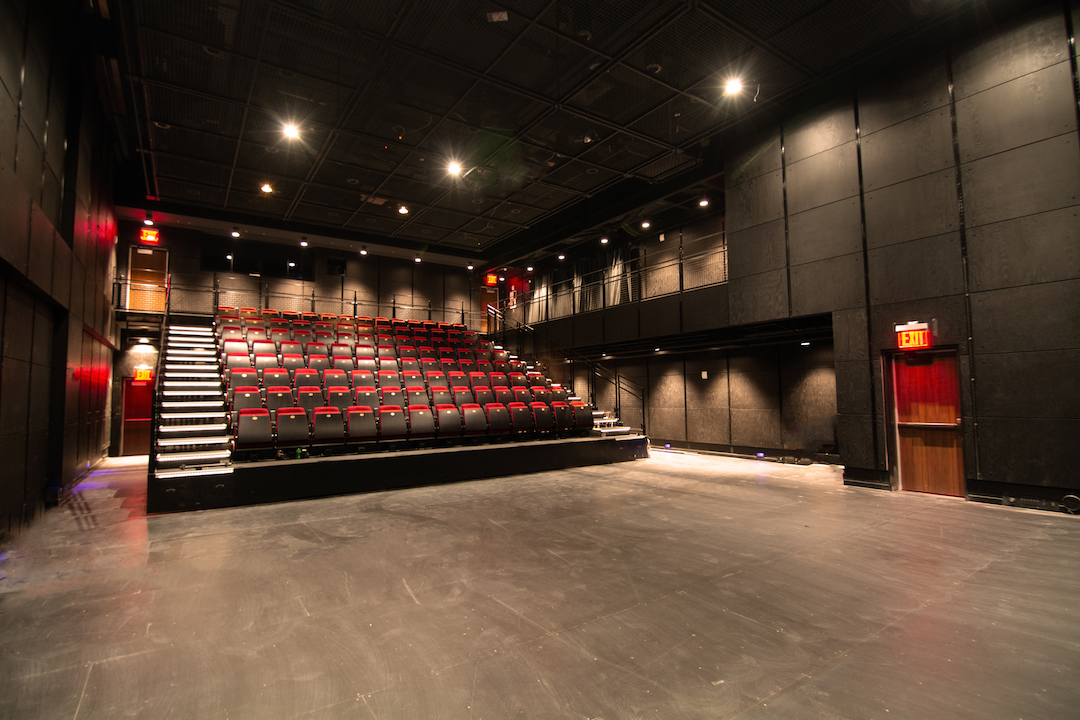
Several sources confirm that their cultural clients are seeking energy efficient solutions for their projects. Shawmut Design and Construction’s recent completion of the Philip Roth Personal Library at Newark (N.J.) Public Library, designed with Ann Beha Architects and C&G Partners, added new MEP and fire protection systems as well as humidity and temperature controls. This 8,860-sf project also features a new HVAC system for Centennial Hall, the building’s lecture hall and event space.
Studio Ma’s recent cultural projects include the Museum of the West in Scottsdale, Ariz., whose tilt-up construction and flexible floor plan helped reduce its overall cost to half that of similar buildings. Passive design principles, such as self-shading the building from sun and heat gain by use of overhanging metal scrims on the second floor, lower the museum’s energy costs by 38 percent compared to peer buildings, says Christiana Moss, FAIA, Studio Ma’s Co-founder and Principal. The building recycles water for humidification, and condensate is diverted to a runnel that connects to a bioswale that can also handle up to 42 gallons per hour of roof rain runoff. These sustainability measures allow the museum to operate with only 45 percent of the water used by peer facilities.
Connecting the cultural building to its community is also an essential, and provides more opportunities for outdoor programming, says Flynn of Cooper Robertson. In Arizona, Studio Ma’s design of the Native American Cultural Center is informed by an Indigenous Planning Process that involved representatives from 22 Arizona tribal communities.
Related Stories
| Apr 12, 2011
Long-awaited San Francisco center is music to jazz organization’s ears
After 28 years, SFJAZZ is getting its first permanent home. The San Francisco-based nonprofit, which is dedicated to advancing the art of jazz through concerts and educational programs, contracted local design firm Mark Cavagnero Associates and general contractor Hathaway Dinwiddie to create a modern performance center in the city’s Hayes Valley neighborhood
| Apr 12, 2011
Entrance pavilion adds subtle style to Natural History Museum of Los Angeles
A $13 million gift from the Otis Booth Foundation is funding a new entrance pavilion at the Natural History Museum of Los Angeles County. CO Architects, Los Angeles, is designing the frameless structure with an energy-efficient curtain wall, vertical suspension rods, and horizontal knife plates to make it as transparent as possible.
| Apr 5, 2011
Zaha Hadid’s civic center design divides California city
Architect Zaha Hadid is in high demand these days, designing projects in Hong Kong, Milan, and Seoul, not to mention the London Aquatics Center, the swimming arena for the 2012 Olympics. But one of the firm’s smaller clients, the city of Elk Grove, Calif., recently conjured far different kinds of aquatic life when members of the City Council and the public chose words like “squid,” “octopus,” and “starfish” to describe the latest renderings for a proposed civic center.
| Mar 11, 2011
Chicago office building will serve tenants and historic church
The Alter Group is partnering with White Oak Realty Partners to develop a 490,000-sf high-performance office building in Chicago’s West Loop. The tower will be located on land owned by Old St. Patrick’s Church (a neighborhood landmark that survived the Chicago Fire of 1871) that’s currently being used as a parking lot.
| Feb 11, 2011
Sustainable features on the bill for dual-building performing arts center at Soka University of America
The $73 million Soka University of America’s new performing arts center and academic complex recently opened on the school’s Aliso Viejo, Calif., campus. McCarthy Building Companies and Zimmer Gunsul Frasca Architects collaborated on the two-building project. One is a three-story, 47,836-sf facility with a grand reception lobby, a 1,200-seat auditorium, and supports spaces. The other is a four-story, 48,974-sf facility with 11 classrooms, 29 faculty offices, a 150-seat black box theater, rehearsal/dance studio, and support spaces. The project, which has a green roof, solar panels, operable windows, and sun-shading devices, is going for LEED Silver.
| Feb 11, 2011
BIM-enabled Texas church complex can broadcast services in high-def
After two years of design and construction, members of the Gateway Church in Southland, Texas, were able to attend services in their new 4,000-seat facility in late 2010. Located on a 180-acre site, the 205,000-sf complex has six auditoriums, including a massive 200,000-sf Worship Center, complete with catwalks, top-end audio and video system, and high-definition broadcast capabilities. BIM played a significant role in the building’s design and construction. Balfour Beatty Construction and Beck Architecture formed the nucleus of the Building Team.
| Feb 11, 2011
Kentucky’s first green adaptive reuse project earns Platinum
(FER) studio, Inglewood, Calif., converted a 115-year-old former dry goods store in Louisville, Ky., into a 10,175-sf mixed-use commercial building earned LEED Platinum and holds the distinction of being the state’s first adaptive reuse project to earn any LEED rating. The facility, located in the East Market District, houses a gallery, event space, offices, conference space, and a restaurant. Sustainable elements that helped the building reach its top LEED rating include xeriscaping, a green roof, rainwater collection and reuse, 12 geothermal wells, 81 solar panels, a 1,100-gallon ice storage system (off-grid energy efficiency is 68%) and the reuse and recycling of construction materials. Local firm Peters Construction served as GC.
| Feb 11, 2011
Former Richardson Romanesque hotel now houses books, not beds
The Piqua (Ohio) Public Library was once a late 19th-century hotel that sat vacant and deteriorating for years before a $12.3 million adaptive reuse project revitalized the 1891 building. The design team of PSA-Dewberry, MKC Associates, and historic preservation specialist Jeff Wray Associates collaborated on the restoration of the 80,000-sf Richardson Romanesque building, once known as the Fort Piqua Hotel. The team restored a mezzanine above the lobby and repaired historic windows, skylight, massive fireplace, and other historic details. The basement, with its low ceiling and stacked stone walls, was turned into a castle-like children’s center. The Piqua Historical Museum is also located within the building.
| Feb 11, 2011
Sustainable community center to serve Angelinos in need
Harbor Interfaith Services, a nonprofit serving the homeless and working poor in the Harbor Area and South Bay communities of Los Angeles, engaged Withee Malcolm Architects to design a new 15,000-sf family resource center. The architects, who are working pro bono for the initial phase, created a family-centered design that consolidates all programs into a single building. The new three-story space will house a resource center, food pantry, nursery and pre-school, and administrative offices, plus indoor and outdoor play spaces and underground parking. The building’s scale and setbacks will help it blend with its residential neighbors, while its low-flow fixtures, low-VOC and recycled materials, and energy-efficient mechanical equipment and appliances will help it earn LEED certification.
| Feb 11, 2011
Texas megachurch inspired by yesteryear’s materials, today’s design vocabulary
The third phase of The First Baptist Church of Pasadena, Texas, involves construction of a new 115,000-sf worship center addition. Currently in design by Zeigler Cooper, the project will include a 2,500-seat worship center (with circular layout and space for a 50-person orchestra and 200-person choir), a 500-seat chapel (for weddings, funerals, and special events), and a prayer room. The addition will connect to the existing church and create a Christian Commons for education, administration, music, and fellowship. The church asked for a modern design that uses traditional materials, such as stone, brick, and stained glass. Construction is scheduled to begin this summer.


